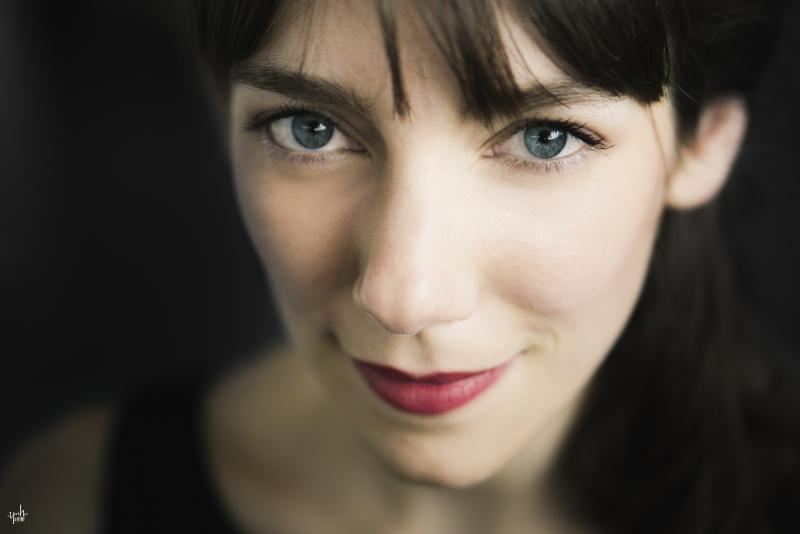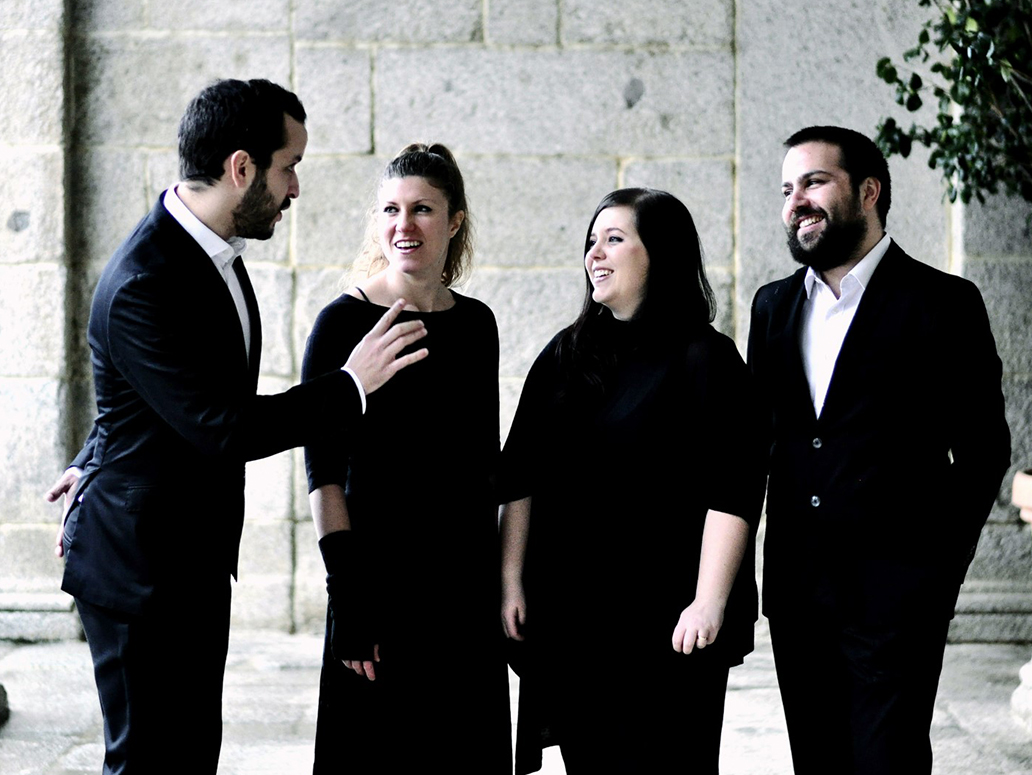Concerto 1700, L’Apothéose, St John's Smith Square review - rare Spanish treasures | reviews, news & interviews
Concerto 1700, L’Apothéose, St John's Smith Square review - rare Spanish treasures
Concerto 1700, L’Apothéose, St John's Smith Square review - rare Spanish treasures
Sophistication, and sensuality, from 18th-century Madrid

Escapees from Eurovision in Westminster on Saturday night might have discovered that a continent-wide enthusiasm for crowd-pleasing international styles arose long before the age of glitzy pop. Two accomplished Spanish groups performed at St John’s Smith Square within this year’s London Festival of Baroque Music. Both came with an attractive, unfamiliar 18th-century repertoire from their homeland.
In the first of two concerts, Concerto 1700 played string trios from the time of the Spanish Enlightenment in the second half of the 18th century. Later, the ensemble L’Apothéose, fronted by soprano Lucía Caihuela, went back a generation with a selection of numbers from the operas and oratorios that had wowed Madrid during the period when Handel ruled the aisles in London. In many cases, the Italian colouring came from imported court musicians themselves – the Spanish crown then governed southern Italy through the Kingdom of Naples.
 Concerto 1700 (pictured above by Noah Shaye) is directed by violinist Daniel Pinteño, with fellow-fiddler Fumiko Morie and cellist Ester Domingo. They energetically mixed trios by the Madrid-based Luigi Boccherini and his fellow-expatriate Cayetano (Gaetano) Brunetti with works from the Navarrese composer, José Castel. Period-instrument specialists, the three mutually-attentive performers nicely blended courtliness with a touch of rusticity in Castel’s G minor and E-flat major trios. They managed to fortify these pieces’ smooth prettiness with rhythmic urgency and some crunchy ensemble playing. Pinteño’s solo passagework shone, while Domingo’s robust, flavoursome cello truly came into its own in Boccherini’s G major trio – composed by a star cellist himself.
Concerto 1700 (pictured above by Noah Shaye) is directed by violinist Daniel Pinteño, with fellow-fiddler Fumiko Morie and cellist Ester Domingo. They energetically mixed trios by the Madrid-based Luigi Boccherini and his fellow-expatriate Cayetano (Gaetano) Brunetti with works from the Navarrese composer, José Castel. Period-instrument specialists, the three mutually-attentive performers nicely blended courtliness with a touch of rusticity in Castel’s G minor and E-flat major trios. They managed to fortify these pieces’ smooth prettiness with rhythmic urgency and some crunchy ensemble playing. Pinteño’s solo passagework shone, while Domingo’s robust, flavoursome cello truly came into its own in Boccherini’s G major trio – composed by a star cellist himself.
Here daintiness vied with earthiness. The spirit of the dance pushed bracingly through a façade of courtly suavity. To conclude, Brunetti’s trio – enhanced by springy rhythms and suspenseful pauses – spanned both Handelian serenity in its brooding “larghetto”, and Vivaldian brio in the allegros, with some droll bird calls on the lead violin to enrich the mix. Created at a time when the Spanish court aimed to display its advanced, European sophistication, this urbane music might have dwindled into well-mannered gentility. But Concerto 1700 lent it an uplifting vernacular bite with playing that located elements of lilt, drive, and even occasional spikiness, behind the well-polished veneer.
 With nine pieces selected from works of the 1720s to 1740s, L’Apothéose (pictured above) iintroduced us to the lyric stage of high-society Madrid in the epoch when Handel made Italian opera big business in the West End. Indeed, the two capitals competed: superstar castrato Farinelli moved from London to Madrid, where from the 1730s the royal Buen Retiro theatre played a Covent Garden-like role. The group, with Lucía Caihuela’s richly expressive, mezzo-tinted soprano partnered by two violins, baroque flute, cello and harpsichord, will have reminded Handel fans at every turn both of all that these composers shared with him – and how local conditions allowed them to differ. A cantada by Francisco Corselli – another transplanted Italian – showcased the range, heft and agility of Caihuela’s voice. It also announced the first of several beautifully deft but grainy, well-seasoned flute solos by Laura Quesada. They proved a highlight of the evening as Quesada supplied the second “voice”, a fine foil and complement to Caihuela. Corselli’s sacred piece Regina caeli laetare boasted some lushly operatic runs and a stirring “Alleluia”, while the instrumental “Symphony” from an oratorio by José de San Juan bounced along in a gigue-like dance.
With nine pieces selected from works of the 1720s to 1740s, L’Apothéose (pictured above) iintroduced us to the lyric stage of high-society Madrid in the epoch when Handel made Italian opera big business in the West End. Indeed, the two capitals competed: superstar castrato Farinelli moved from London to Madrid, where from the 1730s the royal Buen Retiro theatre played a Covent Garden-like role. The group, with Lucía Caihuela’s richly expressive, mezzo-tinted soprano partnered by two violins, baroque flute, cello and harpsichord, will have reminded Handel fans at every turn both of all that these composers shared with him – and how local conditions allowed them to differ. A cantada by Francisco Corselli – another transplanted Italian – showcased the range, heft and agility of Caihuela’s voice. It also announced the first of several beautifully deft but grainy, well-seasoned flute solos by Laura Quesada. They proved a highlight of the evening as Quesada supplied the second “voice”, a fine foil and complement to Caihuela. Corselli’s sacred piece Regina caeli laetare boasted some lushly operatic runs and a stirring “Alleluia”, while the instrumental “Symphony” from an oratorio by José de San Juan bounced along in a gigue-like dance.
However, it was Caihuela’s succession of recitative-plus-aria extracts from Madrid operas othat made the night’s most joyful noise. With her dramatic phrasing and vocal chiaroscuro balanced by the tough sweetness of Quesada’s flute, the aria from Jaime (Giacopo) Facco’s The Amazons of Spain proved a show-stopper that any Handel diva might have slain to deliver. Gutsy and spirited, but with moments of tender reflection and refined ornamentation, Caihuela sang with hugely appealing freshness and vigour.
In the numbers by José de Nebra, a stronger, rhythmically distinctive, Spanish tinge begins to modify the musical lingua franca of the 18th-century opera house. Nebra, a prolific, popular theatre composer before he joined the royal chapel, surely deserves to be better known here. Caihuela’s aria from his Amor aumenta el valor had a sultry cheek and sensuous defiance that might have belonged to some prototype Carmen (OK: French, I know, but still…). And, by the time of the stomping, bouncing encore with its fandango flavour, we had left the constrained politeness of musical etiquette at the Madrid court far behind. Asís Márquez’s harpsichord anchored some tight accompaniments that – with Victor Martínez’s and Marta Mayoral’s violins, and Carla Sanfélix’s cello – neatly offset the starring roles of voice and flute. This journey to Spain revealed musical territory full of rare delights. I’ll hope for a return trip very soon.
rating
Explore topics
Share this article
The future of Arts Journalism
You can stop theartsdesk.com closing!
We urgently need financing to survive. Our fundraising drive has thus far raised £49,000 but we need to reach £100,000 or we will be forced to close. Please contribute here: https://gofund.me/c3f6033d
And if you can forward this information to anyone who might assist, we’d be grateful.

Subscribe to theartsdesk.com
Thank you for continuing to read our work on theartsdesk.com. For unlimited access to every article in its entirety, including our archive of more than 15,000 pieces, we're asking for £5 per month or £40 per year. We feel it's a very good deal, and hope you do too.
To take a subscription now simply click here.
And if you're looking for that extra gift for a friend or family member, why not treat them to a theartsdesk.com gift subscription?
more Classical music
 Hallé John Adams festival, Bridgewater Hall / RNCM, Manchester review - standing ovations for today's music
From 1980 to 2025 with the West Coast’s pied piper and his eager following
Hallé John Adams festival, Bridgewater Hall / RNCM, Manchester review - standing ovations for today's music
From 1980 to 2025 with the West Coast’s pied piper and his eager following
 Kaploukhii, Greenwich Chamber Orchestra, Cutts, St James's Piccadilly review - promising young pianist
A robust and assertive Beethoven concerto suggests a player to follow
Kaploukhii, Greenwich Chamber Orchestra, Cutts, St James's Piccadilly review - promising young pianist
A robust and assertive Beethoven concerto suggests a player to follow
 Robin Holloway: Music's Odyssey review - lessons in composition
Broad and idiosyncratic survey of classical music is insightful but slightly indigestible
Robin Holloway: Music's Odyssey review - lessons in composition
Broad and idiosyncratic survey of classical music is insightful but slightly indigestible
 Classical CDs: Wolf-pelts, clowns and social realism
British ballet scores, 19th century cello works and contemporary piano etudes
Classical CDs: Wolf-pelts, clowns and social realism
British ballet scores, 19th century cello works and contemporary piano etudes
 Bizet in 150th anniversary year: rich and rare French offerings from Palazzetto Bru Zane
Specialists in French romantic music unveil a treasure trove both live and on disc
Bizet in 150th anniversary year: rich and rare French offerings from Palazzetto Bru Zane
Specialists in French romantic music unveil a treasure trove both live and on disc
 Scottish Chamber Orchestra, Ibragimova, Queen’s Hall, Edinburgh review - rarities, novelties and drumrolls
A pity the SCO didn't pick a better showcase for a shining guest artist
Scottish Chamber Orchestra, Ibragimova, Queen’s Hall, Edinburgh review - rarities, novelties and drumrolls
A pity the SCO didn't pick a better showcase for a shining guest artist
 Kilsby, Parkes, Sinfonia of London, Wilson, Barbican review - string things zing and sing in expert hands
British masterpieces for strings plus other-worldly tenor and horn - and a muscular rarity
Kilsby, Parkes, Sinfonia of London, Wilson, Barbican review - string things zing and sing in expert hands
British masterpieces for strings plus other-worldly tenor and horn - and a muscular rarity
 From Historical to Hip-Hop, Classically Black Music Festival, Kings Place review - a cluster of impressive stars for the future
From quasi-Mozartian elegance to the gritty humour of a kitchen inspection
From Historical to Hip-Hop, Classically Black Music Festival, Kings Place review - a cluster of impressive stars for the future
From quasi-Mozartian elegance to the gritty humour of a kitchen inspection
 Shibe, LSO, Adès, Barbican review - gaudy and glorious new music alongside serene Sibelius
Adès’s passion makes persuasive case for the music he loves, both new and old
Shibe, LSO, Adès, Barbican review - gaudy and glorious new music alongside serene Sibelius
Adès’s passion makes persuasive case for the music he loves, both new and old
 Anja Mittermüller, Richard Fu, Wigmore Hall review - a glorious hall debut
The Austrian mezzo shines - at the age of 22
Anja Mittermüller, Richard Fu, Wigmore Hall review - a glorious hall debut
The Austrian mezzo shines - at the age of 22
 First Person: clarinettist Oliver Pashley on the new horizons of The Hermes Experiment's latest album
Compositions by members of this unusual quartet feature for the first time
First Person: clarinettist Oliver Pashley on the new horizons of The Hermes Experiment's latest album
Compositions by members of this unusual quartet feature for the first time

Add comment